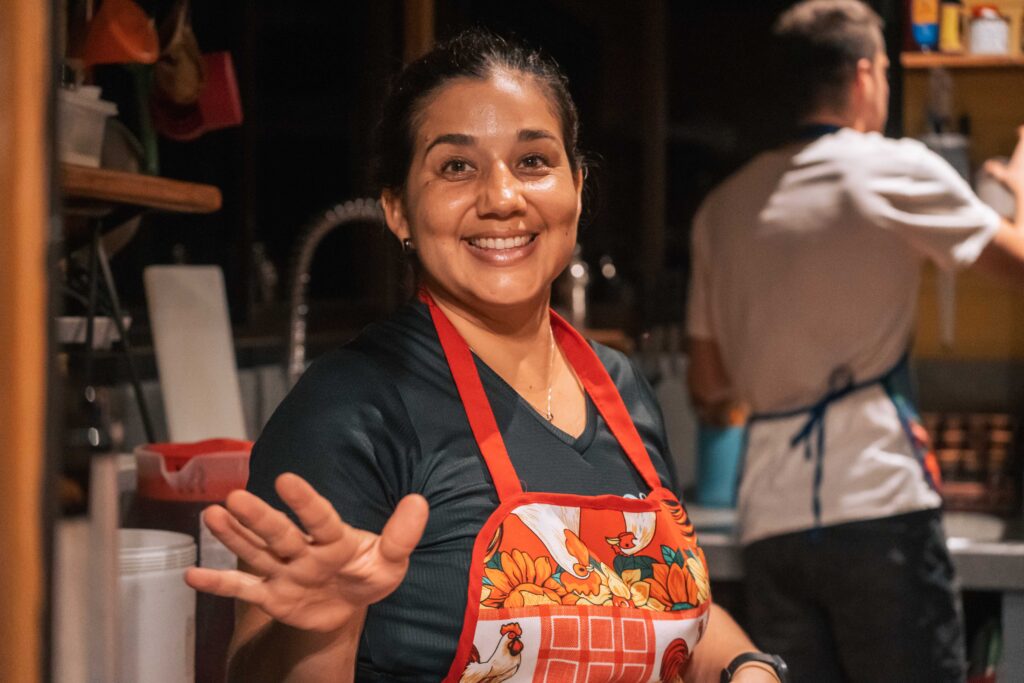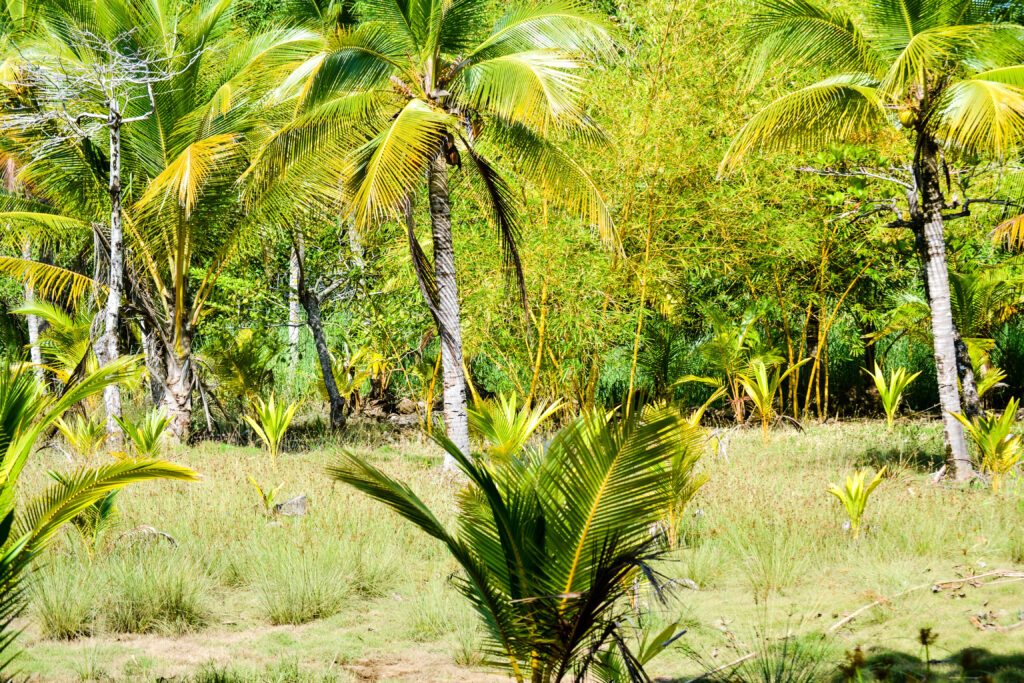Gallo Pinto: Recipe & History of Costa Rica’s Traditional Beans & Rice Breakfast
Gallo Pinto is a simple and classic breakfast consisting of rice, beans, and Salsa Lizano (another Tico must-try).
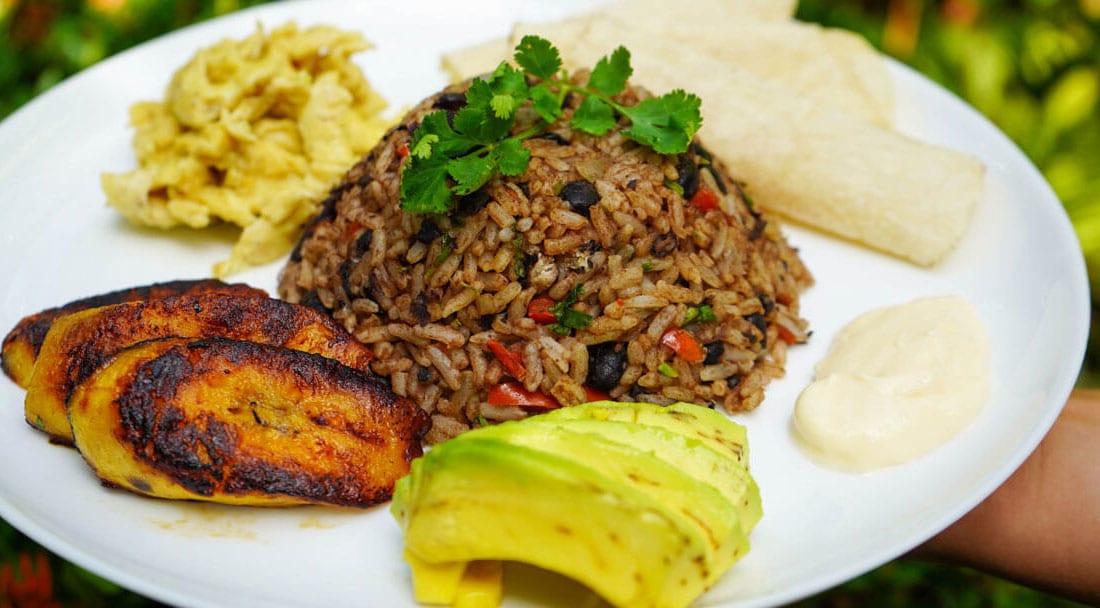
What Is Gallo Pinto?
Gallo Pinto, the national dish of Costa Rica,proves that simple ingredients can pack a powerful punch of flavor.
This flavorful Costa Rican breakfast is typically served with eggs, platanos maduros (sweet fried plantains), natilla (sour cream), and tortillas, a combination that perfectly complements the meal’s flavors and textures. No trip to Costa Rica is complete without this famous dish!
If you come to stay with us on one of our week-long surf and yoga vacations in Costa Rica, be sure to try it! After waking up to the birds chirping in the early morning and perhaps going for a walk, catching some waves, or doing a few rounds of sun salutations, this classic Costa Rican breakfast is just what you’ll be craving.
Many travelers outside of Latin America might find the idea of beans and rice for breakfast unusual, but trust us: you don’t want to miss out on Costa Rican Gallo Pinto. It’s a perennial guest favorite here at Bodhi Surf + Yoga, and for good reason!
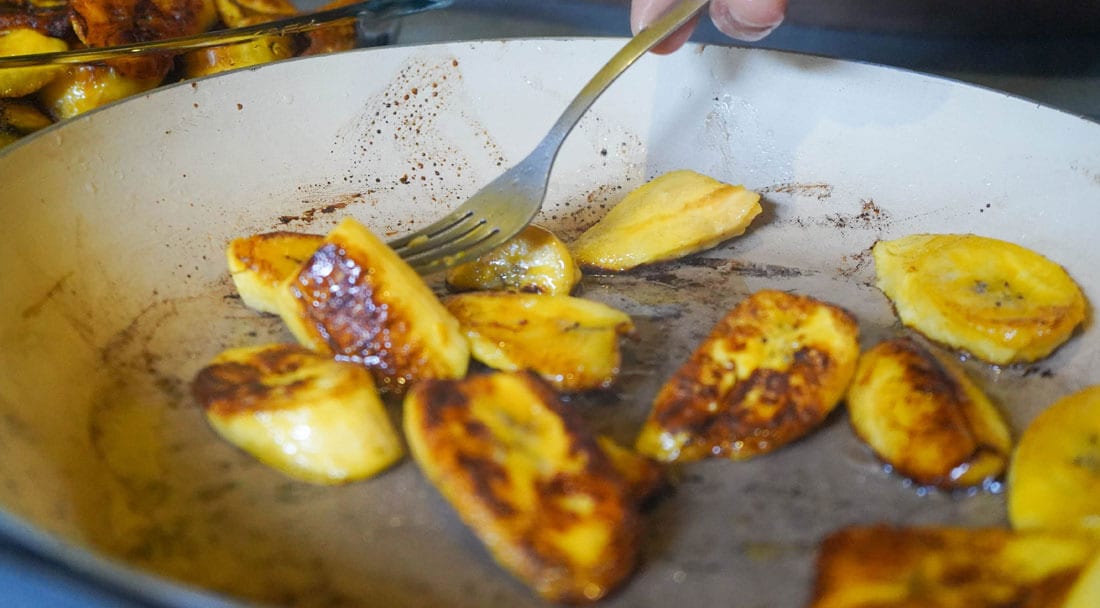
History of Gallo Pinto and What It Means In English
The history behind Gallo Pinto is a strange one. The literal translation from Spanish is “spotted rooster,” which likely refers to the spots of black beans within the white rice resembling the spots on a rooster. But, there is one tale that is much more entertaining…
In the mountains of Costa Rica some decades ago, a farmer invited friends and family over for a big meal. He was going to cook up his prized rooster—the gallo (“rooster”) pinto (“spotted”)—to feed everyone.
As word got out about this feast, more and more villagers decided to come along. And by the time lunch was to be served, there were far too many people for one rooster to satisfy.
In a panic, the farmer cooked up some leftover rice and black beans in an attempt to transform the dish into a meal fit for a crowd.
It turned out that many of the townspeople that came didn’t even get any of the rooster and ended up only eating the rice and beans.
From that day forward, whenever the townspeople ate rice and beans they would jokingly ask, “Hey, how was your Gallo Pinto?”
The saying stuck and now Gallo Pinto is synonymous with one of the best breakfasts in all of Costa Rica.
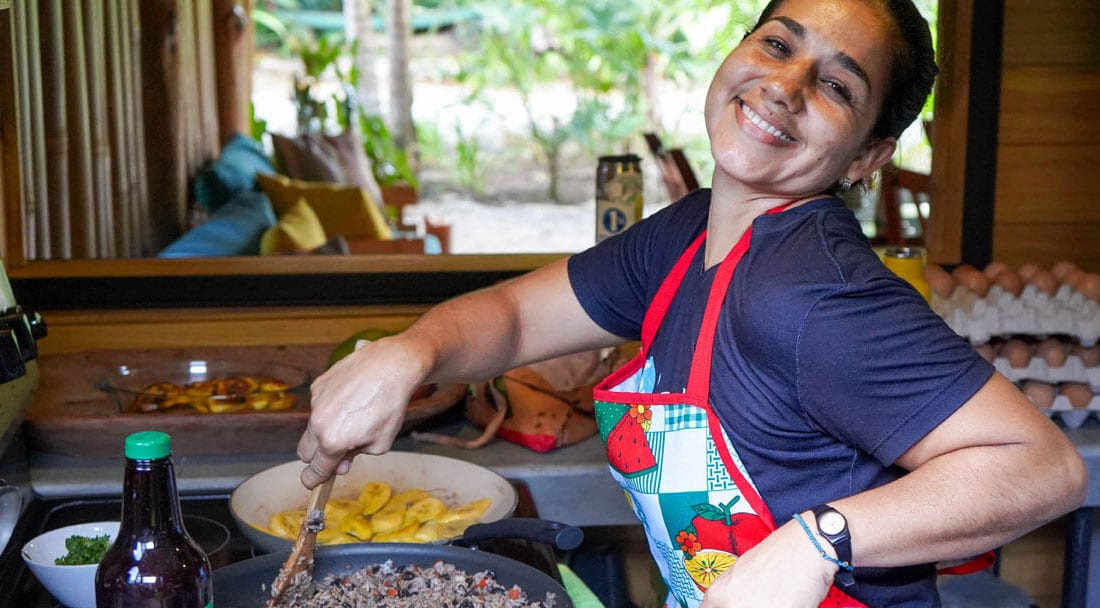
Costa Rican Gallo Pinto vs. Nicaraguan Gallo Pinto
The origins of Gallo Pinto have been a subject of debate for many generations.
Is it from Costa Rica or Nicaragua? And which country makes the better version?
It’s commonly agreed that Gallo Pinto has its origins in the Afro-Caribbean community but neither country can truly lay claim to this staple breakfast dish.
Some sources say it was invented in the suburbs of San Jose, while others claim the dish goes back to the 17th or 18th centuries with the introduction of African slaves to the Nicaraguan shores.
It was first documented in the book Mamita Yunai by Carlos Luis Fallas, which explores the role of banana plantations in Central American history.
During this time, both Costa Ricans and Nicaraguans worked together across the coasts so it’s difficult for either to truly claim ownership.
Nevertheless, Gallo Pinto is the national dish of both Nicaragua and Costa Rica. The two versions do, however, have very distinct differences.
In Costa Rica (and at Bodhi Surf + Yoga), Gallo Pinto is made with black beans. Costa Rican cooks sometimes add Salsa Lizano for a touch of extra flavor, a sauce similar to Worcestershire sauce but with a milder kick. Meanwhile, Nicaragua’s Gallo Pinto uses red beans.
While this hotly debated topic will never truly be solved, we play favorites at Bodhi Surf + Yoga so you can guess where our loyalties lie…
Learn More: Learn about a few additional classic Costa Rican dishes in addition to Gallo Pinto with this video from Bodhi Surf + Yoga founder and tica, Pilar.
Costa Rican Gallo Pinto Ingredients & Recipe
Ingredients
- 3 cups day-old, cooked white rice
- 3-4 cups black beans, cooked
- 1 onion, finely chopped
- 1 sweet pepper, finely chopped
- ¾ cup chopped cilantro, loosely packed
- 1 tablespoon complete seasoning
- 3 tablespoons Salsa Lizano
- 1 tablespoon olive oil
Instructions
- In a large pan or skillet on medium-high heat, saute the onion and pepper with olive oil until cooked.
- Add the beans, seasoning, and Salsa Lizano. Cook until beans are warmed through and flavorful.
- Add the rice and mix everything together. Fry the Gallo Pinto for about 5 minutes, until all of the flavors are incorporated.
- Off the heat, add the cilantro.
- Serve with scrambled eggs, platanos maduros, fresh fruit, and enjoy!
This, and other awesome recipes are available in our Bodhi Cookbook. Sign up to download and gain access to 50+ awesome, delicious recipes!
Frequently Asked Questions
How to make Gallo Pinto with canned beans?
Canned beans are cooked, so you don’t have to soak and boil the beans. Just rinse and drain them, then add them to the pan after sauteing the onions along with some reserved bean liquid for extra flavor.
Why is Gallo Pinto important to Costa Rica?
Gallo Pinto is tied to Costa Rica’s identity and culture. It not only reflects Costa Rica’s agricultural heritage of rice and beans—staple crops that have been around since pre-colonial times—but also the philosophy of ‘less is more’.
Is Gallo Pinto healthy?
Yes! Gallo Pinto is packed with protein, fiber, antioxidants, and vitamins. The beans alone are a great source of vitamins and minerals, including zinc, iron, and potassium. The preparation method also contributes to a healthy meal because it uses minimal oil.
Get the Best Bodhi Lodge Recipes in Your Inbox
Get step-by-step Guest and Staff favorite recipes from our kitchen at the Bodhi Lodge. Your stomach will thank you!
Change the heading on the Separator tab ->
Search
Get the Best Bodhi Lodge Recipes in Your Inbox
Get step-by-step Guest and Staff favorite recipes from our kitchen at the Bodhi Lodge. Your stomach will thank you!
Change the heading on the Separator tab ->
Most Read Blogs
What is the Meaning of Anjali Mudra?
May 27, 2020
Fitness for Surfers: Workouts, Exercises & Training
February 10, 2022
The Best Places to Eat in Uvita, Costa Rica
May 19, 2022
How to Get From SJO to Costa Ballena, Costa Rica
May 31, 2018
Change the heading on the Separator tab ->
Categories
Categories
- Bodysurfing (5)
- Food (8)
- Responsible Business (6)
- Surfing (66)
- Travel (65)
- Yoga (44)
Change the heading on the Separator tab ->
Newsletter
Thanks for subscribing! Please check your email for further instructions.
Change the heading on the Separator tab ->
Follow Us
Bodhi Surf + Yoga
Change the heading on the Separator tab ->
Read more
Ayurveda Series – Cooking with Prana
Words by Pilar
Welcome back! We’re thrilled that you’ve decided to join us as we dive into our third blog in Pilar’s discovering Ayurveda series – Cooking with Prana. Just to jog your memory, Pilar…
Locos for Cocos! All you Need to Know About Coconuts
Words by Guest Post
A typical surf session with Bodhi Surf + Yoga ends with a fresh coconut to drink and eat. Early in the morning, local seller Andrés harvests the coconuts off the trees and…
Must Try Food in Costa Rica – Costa Rican Cuisine
Words by George Frost
Home to luscious rainforests, pristine beaches, diverse wildlife, and incredible national parks, Costa Rica is one of the best places to be all year round. But there’s more to the gorgeous Central…

